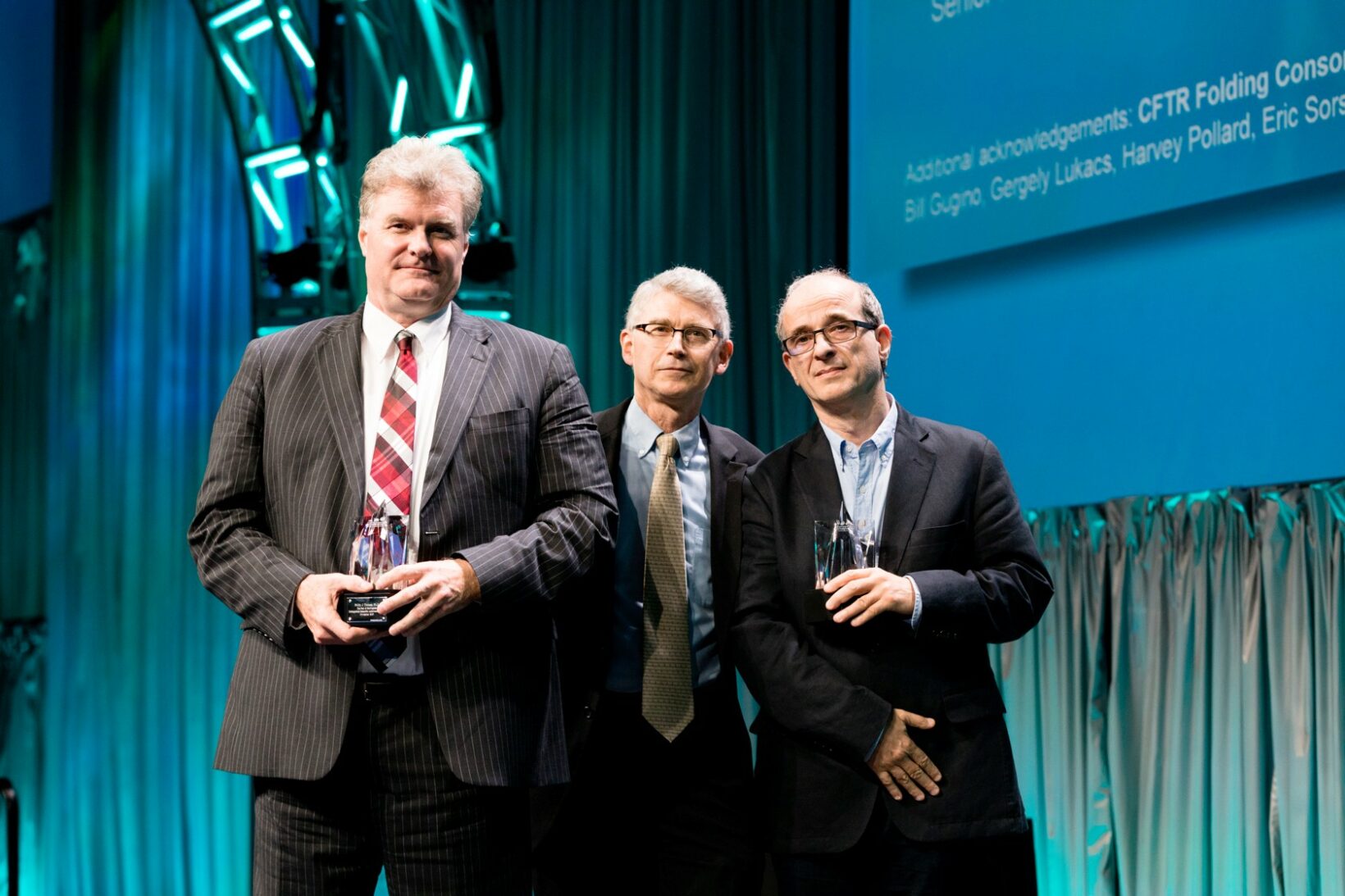
(With files from the Cystic Fibrosis Foundation)
The Cystic Fibrosis Foundation’s (CFF) 2017 Paul di Sant’Agnese Distinguished Scientific Achievement Award was recently presented to Dr. Gergely L. Lukacs, a Professor in the Department of Physiology at McGill University’s Faculty of Medicine and to Philip J. Thomas, PhD, a Professor in the Department of Physiology at the University of Texas Southwestern Medical Center in Dallas. Considered the CFF’s highest scientific honour, the scientists were recognized for using genetic tools to validate the “two-hit” hypothesis that fixing two distinct defects in the cystic fibrosis transmembrane conductance regulator (CFTR) protein by separate means would improve its trafficking and function. This work helped to set the stage for the development of second-generation CFTR modulators.
“I feel both honored and thankful, for myself and also on behalf of the past and present members of my laboratory, to receive the 2017 Paul di Sant’Agnese distinguished scientific achievement award,” says Dr. Lukacs. “This award recognizes some 25 years of work on the molecular cell biology of the cystic fibrosis protein (CFTR). Specifically, our discovery that uncovered a novel folding framework for a more efficient therapeutic strategy of the most common mutation by using rationally selected drug combination. Our prediction, based on the dissection of the normal and mutant protein folding, was published in 2012 in Cell and gained traction by the recent success using drug combination on cystic fibrosis patients in clinical trials. The results are particularly rewarding for a medical doctor who has devoted most of his activity to research, as I have.”
The award was created to honor Dr. Paul di Sant’Agnese, a pioneering researcher and clinician whose legacy will be forever linked to his advancements in cystic fibrosis research.
Dr. di Sant’Agnese began his career at Columbia-Presbyterian Medical School as a young pediatric pathologist caring for children with a newly recognized disease called “Cystic Fibrosis of the Pancreas.” At that time, little was known about the disease beyond the lack of pancreatic enzymes, and his early research provided insight into the effects of the disease on the lungs. In 1946, he reported the first use of an inhaled antibiotic (penicillin) to treat children with CF.
Two years later during a heat wave in New York City, he observed that infants on the CF ward were suffering from heatstroke and dehydration. Over the next five years, he demonstrated that people with CF have elevated salt in their sweat. This finding not only paved the way for the sweat test, which we still use more than 60 years later, but also contributed to the discovery of the underlying chloride transport defect, CF genetic variants and ultimately, the CFTR gene itself.
Dr. di Sant’Agnese served the medical and CF community throughout his five-decades long career. Among his many contributions, he launched one of the first CF centers in the United States, helped found the Cystic Fibrosis Foundation, and established the Pediatric Metabolism Branch at the National Institutes of Health, where he mentored physicians and trainees — many of whom went on to become leading CF scientists.
Congratulations Dr. Lukacs!
November 9, 2017
